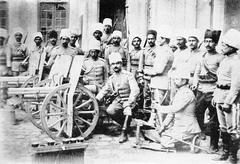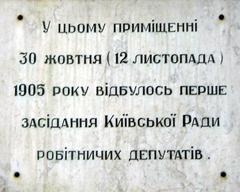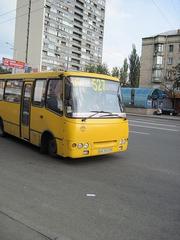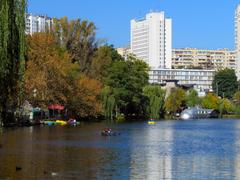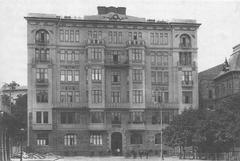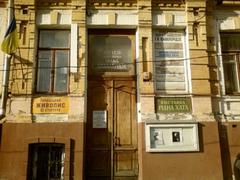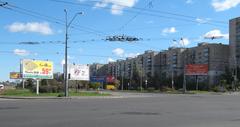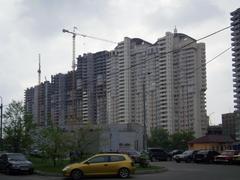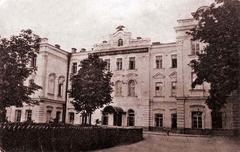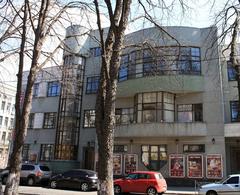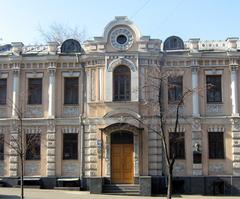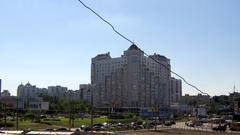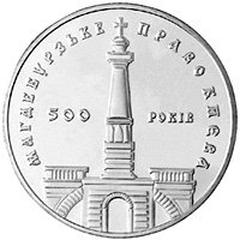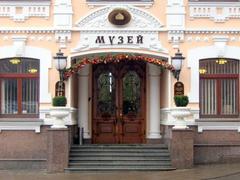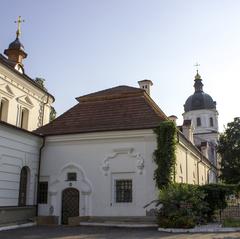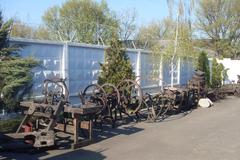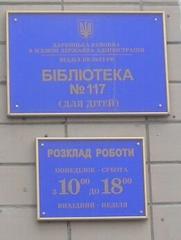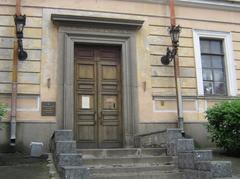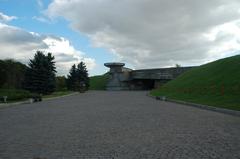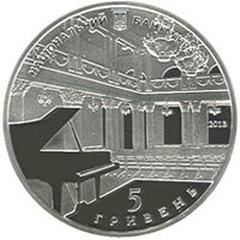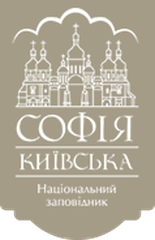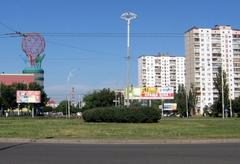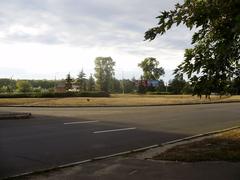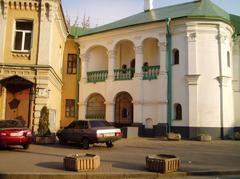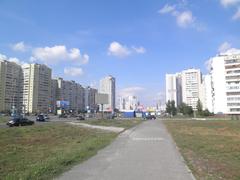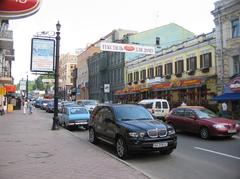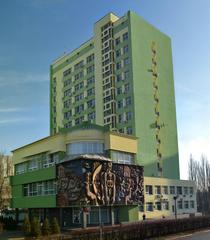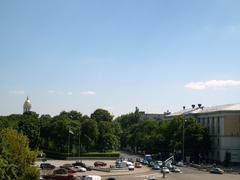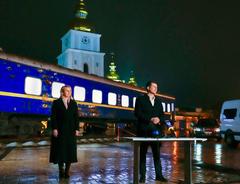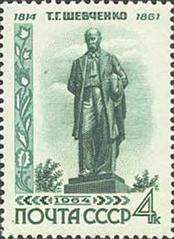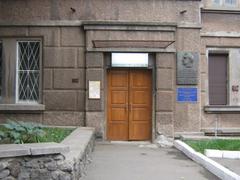Oleny Telihy Street Kyiv: Visiting Hours, Tickets, and Historical Sites Guide
Date: 15/06/2025
Introduction
Oleny Telihy Street, located in Kyiv’s Shevchenkivskyi district and stretching through neighborhoods like Lukianivka and Syrets, is a living testament to Ukraine’s layered history and cultural resilience. Named after Olena Teliha—a revered Ukrainian poet and resistance activist executed during the Nazi occupation—the street is more than an urban thoroughfare; it is a corridor of memory, culture, and community life. Its connection to pivotal events such as the Babyn Yar massacres and the Kurenivska Tragedy, alongside landmarks like St. Cyril’s Church, make Oleny Telihy Street a compelling destination for history enthusiasts, cultural explorers, and travelers seeking meaningful experiences in Kyiv.
This comprehensive guide provides essential visitor information, historical context, practical travel tips, and details about nearby attractions, ensuring you can fully appreciate the street’s significance and plan an enriching visit.
For the latest updates, consult the Babyn Yar Holocaust Memorial Center, Kyiv City Tourism, and the Kurenivska Tragedy Memorial information site.
Contents
- Historical Background
- Early Development and Urbanization
- Naming and Symbolic Significance
- The Kurenivska Tragedy
- Babyn Yar and the Holocaust
- Visitor Information
- Visiting Hours and Tickets
- Getting There
- Accessibility
- Guided Tours and Events
- Key Landmarks and Attractions
- Babyn Yar Memorial Complex
- St. Cyril’s Church
- Parks and Green Spaces
- Practical Tips for Visitors
- Frequently Asked Questions (FAQ)
- Conclusion and Final Tips
- References
Historical Background
Early Development and Urbanization
Oleny Telihy Street emerged amid Kyiv’s Soviet urban expansion in the mid-20th century. Transforming marshland and rural outskirts into a vital city connector, its layout reflected the Soviet ideals of urban planning, linking residential, industrial, and cultural areas. This development was pivotal in integrating the northwestern suburbs with Kyiv’s city center.
Naming and Symbolic Significance
Formerly known as Frunze Street, the thoroughfare was renamed after Ukraine’s independence to honor Olena Teliha—a poet, intellectual, and activist who was executed at Babyn Yar in 1942. This change not only commemorated her legacy but also symbolized the city’s ongoing efforts to reclaim its national identity and honor those who shaped Ukraine’s history.
The Kurenivska Tragedy
On March 13, 1961, a catastrophic dam collapse released a torrent of industrial waste onto the Kurenivka neighborhood, adjacent to Oleny Telihy Street. The disaster claimed the lives of at least 145 people (with some estimates much higher) and left a lasting impact on the local community. Today, the Kurenivska Tragedy Memorial stands at Oleny Telihy St, 31/1, serving as a solemn site of remembrance (Kurenivska Tragedy Memorial).
Babyn Yar and the Holocaust
Bordering the Babyn Yar ravine, Oleny Telihy Street is intimately connected to one of the darkest chapters of World War II. In September 1941, over 33,000 Jews were murdered at Babyn Yar, followed by tens of thousands of additional victims, including Roma, Ukrainian nationalists, and Soviet POWs. The memorial complex here is a profound site of Holocaust remembrance (Babyn Yar Holocaust Memorial Center), with annual commemorations and ongoing educational initiatives.
Visitor Information
Visiting Hours and Tickets
- Oleny Telihy Street: Open to the public 24/7, no entrance fee.
- Babyn Yar Memorial Park: Accessible year-round from dawn to dusk, free of charge.
- St. Cyril’s Church: Open Tuesday–Sunday, 9:00 AM–5:00 PM; closed Mondays. Admission is free.
- Kurenivska Tragedy Memorial: Open access; check for special event hours.
- Guided Tours: Available at Babyn Yar and St. Cyril’s Church; booking in advance is recommended.
Getting There
- Metro: Syrets and Dorohozhychi stations (Green Line, M3) are closest.
- Trams/Buses: Multiple routes serve the area; tickets are inexpensive and can be purchased on board or at kiosks.
- Taxis/Rideshare: Bolt and Uklon operate citywide.
Accessibility
- Public Transport: Most metro stations and major bus/tram lines are accessible.
- Memorials and Parks: Paths are generally accessible, but some historic sites may have uneven terrain. Contact visitor centers for detailed information.
- Wheelchair Users: St. Cyril’s Church and Babyn Yar Memorial offer wheelchair access; some older areas may be challenging.
Guided Tours and Events
- Multiple local tour operators provide guided walks focusing on Holocaust remembrance, the Kurenivska Tragedy, and Kyiv’s Soviet history.
- Annual events include Holocaust Remembrance Day (January 27) and the Babyn Yar Massacre Anniversary (September 29–30).
- Photography is permitted at most sites, with the Menorah Monument and panoramic ravine views offering exceptional photo opportunities.
Key Landmarks and Attractions
Babyn Yar Memorial Complex
A sprawling site of remembrance, the Babyn Yar Memorial Complex includes:
- The Menorah Monument: Symbolizing Jewish victims.
- Children’s Memorial: Honoring the child victims of the Holocaust.
- Monument to Olena Teliha: Commemorating the street’s namesake.
- Other monuments: Dedicated to Roma, Orthodox clergy, and Soviet POWs.
- Visitor Facilities: Multilingual plaques, guided tours, and annual commemorations.
St. Cyril’s Church
Located at Oleny Telihy St, 12, St. Cyril’s Church is a rare example of 12th-century Kievan Rus architecture, later rebuilt in Ukrainian Baroque style. The church is famed for its medieval frescoes and mosaics and serves as both a historical site and a vibrant cultural hub (St. Cyril’s Church Visitor Information).
- Visiting Hours: 9:00 AM–5:00 PM, closed Mondays.
- Tickets: Free admission; guided tours available.
- Cultural Events: Concerts and exhibitions are held throughout the year.
Parks and Green Spaces
- Babyn Yar Park: Offers serene walking paths and reflective spaces amid memorial sculptures. Best visited in spring or autumn.
- Syretskyi Park: Features playgrounds, fitness zones, and picnic areas, accessible via Syrets metro station.
Practical Tips for Visitors
- Dress respectfully at memorials and churches.
- Use official tours for deeper insight into historical context.
- Plan ahead for public holidays and major commemoration dates, when sites may be crowded.
- Carry cash and cards; most establishments accept both, but small purchases may require cash.
- Monitor safety advisories due to Kyiv’s current situation; download the “Kyiv Digital” app for real-time alerts.
- Language: Ukrainian is official; English is available at main sites, but a translation app is helpful.
- Restrooms: Limited public facilities; metro stations and some cafes offer amenities.
Frequently Asked Questions (FAQ)
Q: What are the visiting hours for key sites on Oleny Telihy Street?
A: The street and parks are open year-round. Babyn Yar Memorial Park is accessible from dawn to dusk; St. Cyril’s Church is open Tuesday–Sunday, 9:00 AM–5:00 PM.
Q: Is there an entrance fee for Babyn Yar or St. Cyril’s Church?
A: No, both are free to visit. Some special exhibitions or guided tours may require a fee.
Q: How do I reach Oleny Telihy Street by public transport?
A: Use Syrets or Dorohozhychi metro stations. Buses, trams, and taxis are also available.
Q: Are guided tours available?
A: Yes, at both Babyn Yar Memorial and St. Cyril’s Church. Booking in advance is advised.
Q: Is the area accessible for people with disabilities?
A: Main memorials and churches offer wheelchair access, but some park paths and historic areas may be uneven.
Q: Is Oleny Telihy Street safe for tourists?
A: Yes, it is generally safe. Practice standard precautions and stay informed via official advisories.
Conclusion and Final Tips
Oleny Telihy Street offers a powerful journey through Kyiv’s history, combining poignant memorials, historic architecture, and vibrant community spaces. Visitors can honor the memory of Holocaust victims at Babyn Yar, appreciate the artistry of St. Cyril’s Church, and reflect on stories of resilience at the Kurenivska Tragedy Memorial. With accessible transportation, rich cultural programming, and practical visitor amenities, Oleny Telihy Street is an essential part of any Kyiv itinerary.
For guided audio tours, interactive maps, and up-to-date travel tips, download the Audiala app. Stay informed through official tourism channels and deepen your understanding of Kyiv’s enduring spirit.
References and Further Reading
- Kyiv City Tourism Official Website (https://visitkyiv.city)
- Babyn Yar Holocaust Memorial Center (https://babynyar.org/en)
- Kurenivska Tragedy Memorial Information (https://evendo.com/locations/ukraine/kyiv-reservoir/landmark/the-memorial-to-the-victims-of-the-tragedy-kurenivska)
- St. Cyril’s Church Visitor Information (https://ukrainetrek.com/blog/architecture/st-cyril-church-in-kyiv/)
- Kyiv Investment Agency: Development Projects (https://investinkyiv.gov.ua/en/projects)
- Odile Decq Studio: Babyn Yar Project (https://www.odiledecq.com/projets/kiev-babin-yar/)
- OpenAlfa Ukraine Streets (https://ukraine-streets.openalfa.com/streets/oleny-telihy-street-shevchenkivskyi-district-kyiv)
- Bucket Listly Blog: Kyiv Travel Guide (https://www.bucketlistly.blog/posts/kyiv-things-to-do-guide)
- Travel Like a Boss: Kyiv Safety and Transport (https://travellikeaboss.org/is-it-safe-to-travel-to-kyiv-now/)
